The definitive guide to mastering product sense interviews
A step-by-step playbook to help you ace your PM interview
👋 Welcome to a ✨ free edition ✨ of my weekly newsletter. Each week I tackle reader questions about building product, driving growth, and accelerating your career. For more: Lennybot | Podcast | Courses | Hiring | Swag
Annual subscribers now get a free year of Perplexity Pro, Notion, Superhuman, Linear, and Granola. Subscribe now.
A lot of you are having a hard time finding a job. I hear stories from readers who send out hundreds of resumes and get zero responses, go through month-long interview loops that often end in getting ghosted, and continue on without ever hearing honest feedback about what they could do differently.
I want to help.
In the coming months, I’m going to be sharing a number of newsletter posts with the goal of helping you find a job you love. Today’s post is the first in that series, and it’s a doozy.
The product sense interview is one of the most important and most mysterious steps of the PM interview loop, and Ben Erez just wrote your new bible for mastering that interview.
Ben shares exactly what the product sense interviewer is looking for, a simple framework for structuring your answer in real time, how to practice for these interviews, and even specific phrases you should be using. If you read this post and take its advice, you will significantly increase your chances of landing a job.
Ben has been a founder, a PM at Meta, and the first PM at three different startups, and, as a coach, he’s now helping PMs land their dream roles. Ben’s got a free 30-minute lightning lesson coming up on April 16th where he’ll show you how to use Claude Projects to practice for your product sense interviews, and he also teaches a two-week immersive PM interview bootcamp where you’ll master the product sense and analytical interviews with live case discussions and personalized expert coaching. Use code “LENNYSLIST” to get $100 off. Enrollment closes April 22nd.
Now, on to today’s post. . .
In 2020, I interviewed for a product manager role at Facebook after spending nearly a decade in early-stage startups.
While I had plenty of interview experience at Series A and B startups, structured Big Tech PM interviews felt intimidating to me. To land the offer at Facebook, I would need to ace three interviews: Product Sense, Analytical Thinking (“Execution” back then), and Leadership & Drive. I found myself wondering: How should I prepare? What does a strong response even look like?
Over the course of four intense weeks, I spent countless hours watching every mock interview I could find on YouTube and picking the brains of PMs in my network who passed these interviews. I noticed patterns in the way successful candidates tackled the questions in the YouTube mock videos and drafted a basic template for each interview based on the patterns. I practiced new questions with those paper templates, increasing my skill and confidence. I ultimately aced the interviews and landed the offer.
During my time at Facebook, I interviewed over 50 candidates, which gave me a deeper understanding of the interviewer’s perspective. Over the past few years, I’ve coached hundreds of candidates for interviews and noted common behaviors of successful candidates. I’ve been distilling these insights into a continually updated set of frameworks and templates that have helped dozens of candidates land total comp packages of upward of $600,000. People say the best way to learn something is to teach it, and, through coaching, I’ve leveled up my own understanding of these interviews.
Originally popularized by Facebook and Google, product sense (PS) and analytical thinking (AT) interviews have now been widely adopted across the tech industry, with companies like Stripe, OpenAI, Block, and many others including PS and AT screens in their PM interview loops. Even earlier-stage companies have adopted these in their process. To land my next PM role after Facebook (at Attentive), I had to pass PS and AT interviews.
With the goal of making my materials more widely accessible to the largest number of PM candidates in today’s competitive hiring market, I partnered with Lenny to publish this comprehensive guide for PM candidates to master product sense interviews, which are becoming ubiquitous in PM hiring.
Whether you’re actively preparing for upcoming interviews or simply want to understand how top tech companies evaluate PMs, this guide will equip you with all the tools and frameworks you need to start your preparation.
Understanding the product sense interview
Product sense interviews assess your ability to identify user needs, articulate problems, and craft compelling solutions while demonstrating empathy, creativity, and structured thinking. These interviews are typically 45 minutes long, giving candidates roughly 35 minutes for the core exercise after accounting for introductions and closing questions.
To pass, candidates need to achieve at least a passing score on each dimension within the time box:
Clear communication: Delivering an easy-to-follow response with solid structure
Product motivation: Examining the product’s purpose and mission
Segmentation: Defining the audience and prioritizing a target segment
Problem identification: Listing and prioritizing key pain points faced by the chosen segment
Solution development: Brainstorming and prioritizing a solution for the problem, including a v1
Excellence in one area can’t compensate for weakness in another. But you don’t need perfect scores across the board; a solid score for each dimension is sufficient to pass. A structured approach gives you the best chance of delivering all the signals interviewers need before running out of time.
I’ve included in this post concrete ways a candidate might discuss each of the above evaluation dimensions for three example product sense questions:
“Tell me about a product you love and how you would improve it.”
“You’re a PM at Meta. Design a product for gardening.”
“Build a podcast product for Netflix.”
Note: For the “Tell me about a product you love and how you would improve it” question, I chose Claude Projects because it’s an incredible product that I use regularly.
I generally coach candidates to structure their game plan for the interview in a way that enables them to provide strong signals on the interview dimensions in a linear flow:
A quick note about interviewer empathy
Understanding the interviewer’s perspective can help you structure your responses effectively. Product sense interviewers operate under constraints you might not consider:
Most interviewers are busy PMs conducting interviews to help the organization, balancing this responsibility with demanding day jobs.
Interviews are typically thrown on the interviewer’s calendar by a coordinator.
The rubric for PS and AT interviews is generally consistent across seniority levels.
What does this mean for you? Since the interviewer’s job is to efficiently collect specific signals to complete their evaluation, your job as a candidate is to generate clear, easy-to-identify signals.
This post offers a deep dive into those signals for product sense interviews.
Next, I’ll share my framework for each of the five dimensions of the product sense interview.
Baseline skill: Clear communication
The opening minutes of a product sense interview can make or break your performance. I’ve watched countless candidates struggle because they jumped straight into brainstorming without aligning with the interviewer on the structure. The best candidates approach these interviews as a specific game with clear rules rather than a casual conversation.
Generally there are three components to address for clear communication:
Waypointing: Before each section, candidates should take a thinking pause to work for 1-2 minutes and come up with what they want to say. Once they’re ready to share, candidates should walk the interviewer through their response for that section and check in with the interviewer before proceeding to the following section.
Assumption setting: Make 2-4 assumptions at the start of the interview that narrow the scope to a manageable exercise without prematurely limiting your solution space.
Game plan articulation: Clearly outline your approach for the entire interview, showing the interviewer how you’ll structure your time.
To set yourself up for success, these are a few potential assumptions to state:
Role and context: State your assumed role and the company/product context for the exercise.
Geographic focus: Specify whether you’ll focus on a specific market or region for your response.
Platform and constraints: Identify any technical or strategic constraints that will help focus your solution, without over-limiting possibilities.
These assumptions should help you focus the discussion without prematurely limiting your solution space. The goal is to establish enough structure to proceed efficiently while remaining open to the interviewer’s guidance.
After stating assumptions, strong candidates review their game plan for the interview and check in with the interviewer to make sure they’re on the same page about how they’ll be spending the time together.
Regardless of the question asked, I recommend that candidates state something along these lines:
“Before I dive in, I’d like to walk you through my plan for our time together:
I’ll start by describing the product/experience and why it matters.
Then I’ll break down the target audience and define a segment to focus on.
From there, I’ll identify key problems for that segment and prioritize one.
I’ll then brainstorm solutions and pick one.
If we have time, I’d love to describe a v1 implementation of that solution.
Does this plan sound good to you?”
This is music to the ears of the interviewer. It assures them that the candidate is prepared and has a plan to generate the signals they’re looking for. It’s like discovering they’re about to start a game with someone who knows how to play it.
It also offers the interviewer a chance to redirect the candidate, preventing wasted time heading down an undesired path. Interviewers value candidates who lead with structure while remaining adaptable to the interviewer’s input.
Elevating clear communication
What separates good communication from exceptional communication in these interviews:
Strategic structure ownership: Drive the conversation with clear assumptions and a well-articulated plan, demonstrating leadership while remaining adaptable to interviewer feedback.
Explicit waypointing: Use verbal signposts throughout your response that help the interviewer track your thinking, clearly distinguishing between your process and conclusions.
Balanced scope management: Choose assumptions that provide helpful guardrails without prematurely closing off creative solution paths, showing you can manage complexity effectively.
Examples of articulating assumptions
Question 1: Tell me about a product you love and how you would improve it
I’ve been using Claude Projects and love it, so I’ll focus on this product and assume I’m the PM for Claude Projects at Anthropic, building within Anthropic’s existing product ecosystem.
I’ll focus on the Claude Projects feature within the Claude Pro subscription, targeting the U.S. market initially but leaving the door open to serving a global audience with our solution.
I’ll focus on improvements for individual Claude users rather than Anthropic’s enterprise API customers, since Projects doesn’t apply to API customers.
Question 2: You’re a PM at Meta. Design a product for gardening.
I’ll assume I’m the PM for a new zero-to-one product for gardening at Meta.
I’ll focus on the U.S. market for this product because it’s what I’m most familiar with, and we can likely scale our solution globally in the future.
For distribution advantages and accelerated impact, I’ll plan to design a solution within Meta’s family of apps (Facebook, Instagram, WhatsApp) rather than as a standalone product.
I’ll focus on personal/home gardening rather than commercial or botanical gardens.
Question 3: Build a podcast product for Netflix.
I’ll assume I’m the PM for a new zero-to-one podcast product at Netflix.
I’ll focus on the U.S. market initially, though Netflix is global.
For distribution and accelerated impact, I’ll aim to build within Netflix’s existing platform/ecosystem.
Podcasts include both audio and video, but I’ll focus on audio for this exercise, since most podcasting usage is via audio.
While we could build something for people who don’t yet use Netflix, I’d like to limit our exercise to serving existing Netflix subscribers, since we can make a large impact by serving hundreds of millions of people.
Top pitfalls for clear communication
Understanding what makes for clear communication is only part of the equation. Just as important is knowing what to avoid. Here are the most common pitfalls I’ve observed candidates step into when structuring their communication:
Thinking out loud without structure: Starting to brainstorm without a clear framework forces the interviewer to piece together your thought process, making it difficult for them to follow your reasoning and identify the signals they need to evaluate.
Asking the interviewer for direction: Frequently asking, “What would you like me to do next?” or “Would you prefer I focus on X or Y?” signals a lack of ownership and leadership. Strong candidates proactively drive the conversation while remaining adaptable to feedback.
Premature narrowing: Making assumptions that prematurely narrow your solution space (like assuming specific features or user demographics) limits your options later. Focus on assumptions that provide structure without closing doors too early.
Practice tips for clear communication
To boost your confidence and effectiveness when starting a product sense interview, consider these tactical preparation tips:
Create a standard template: Develop a simple template with 3-4 placeholder assumptions (role, geography, platform constraints) that you can quickly adapt for any product sense question. This gives you immediate structure and helps you avoid the blank-page anxiety that can derail your opening.
Build muscle memory through repetition: Practice stating your assumptions and game plan for 20-30 different product sense questions. By rehearsing these opening elements repeatedly, you’ll develop the confidence to start strong even when nervous or faced with an unexpected question.
Master your waypointing transitions: Practice explicit verbal signposts like “Now that I’ve established assumptions, I’ll outline my plan for our time together” or “Before I think through the product motivation, does this game plan sound good?” These transitions help the interviewer follow your structured thinking and create natural check-in points.
After establishing clear communication fundamentals, the next crucial step is articulating why the product matters. This transition from “how we’ll spend our time” to “why this product exists” creates the foundation for all your subsequent decisions.
Let’s explore how to develop a compelling product motivation that will impress interviewers and set you up for success.
Step 1: Product motivation
The product motivation section sets the tone for the entire interview by demonstrating your holistic understanding of the purpose behind products, rather than just their features. While it might be tempting to rush through this part to get to “meatier” sections, taking 3-5 minutes to thoughtfully establish why the product matters creates a strong foundation before diving into segmentation, problem identification, and solutions.
Generally there are three components to address in this section:
Product description and value: Start by clearly describing what the product or experience entails and connect it to deeper human needs that it addresses. Why does this product matter to users? Why is the world better with this product in it?
Strategic and competitive context: Articulate how this product advances the company’s strategy and fits within its broader ecosystem. Consider market trends, key competitors, and what makes this offering uniquely valuable in the current landscape.
Mission statement: Finish this section with a concise, purpose-driven mission statement that will guide your decision-making throughout the interview. This statement should be specific enough to provide direction but broad enough to allow creative exploration.
When articulating the product motivation, strong candidates go beyond superficial descriptions to articulate deeper purpose. For instance, rather than saying, “This product helps users share photos,” you might say, “This product enables people to maintain meaningful connections with loved ones through visual storytelling, even when physically apart.”
A compelling mission statement serves as a North Star for your interview, guiding your segmentation, problem identification, and solution development. It should be specific enough to provide direction but broad enough to allow for creative exploration. For example, instead of “To help people take better photos,” a stronger mission might be “To empower anyone to capture and preserve meaningful moments through intuitive photography tools.”
Elevating product motivation
What separates good product motivation from exceptional product motivation:
Human-centered purpose articulation: Connect the product to deeper emotional and practical human needs beyond surface functionality, demonstrating empathy and insight into why people would truly care about this product.
Strategic ecosystem positioning: Articulate how the product creates unique value within the company’s broader ecosystem and competitive landscape, showing business acumen and systems thinking.
Mission-driven decision framework: Craft a mission statement specific enough to guide meaningful decisions but broad enough to allow creative solutions, creating a powerful reference point for the rest of your interview.
To illustrate how effective product motivation might look in practice, here are examples for our three interview questions, showing how to articulate the product’s purpose within its broader context:
Examples of articulating product motivation
Question 1: Tell me about a product you love and how you would improve it.
Claude Projects is a feature that allows users to create specialized Claude instances trained on custom documents and knowledge, enabling each chat to be primed with specific context.
While general-purpose AI assistants have broad knowledge, they often lack depth in niche areas. Claude Projects addresses this gap by allowing users to augment Claude’s capabilities with their own materials. Domain-specific AI assistants are increasingly valuable for knowledge workers who need tools that understand their unique contexts.
Key competitors include:
OpenAI
Perplexity
Claude Projects directly contributes to Anthropic’s mission of building AI systems that are helpful, harmless, and honest. Improving this product would increase Claude’s adoption engagement, accelerating Anthropic’s ability to achieve its mission.
Let’s use this as a placeholder mission statement for Claude Projects:
“To empower users to create AI assistants with specialized knowledge and capabilities tailored to their unique needs, making AI more personally relevant and useful in their daily lives and work.”
Question 2: You’re a PM at Meta. Design a product for gardening.
Gardening is a popular hobby that involves cultivating plants, whether for food production or aesthetic enjoyment. It’s an activity that brings people joy, connects them to nature, and can be both therapeutic and practical. During the pandemic, we saw a significant surge in gardening interest as people spent more time at home.
Meta’s mission is to build the future of human connection and the technology that makes it possible. Gardening represents a meaningful opportunity to leverage technology to connect people through shared interests and knowledge exchange. Currently, gardening enthusiasts are spread across various platforms and communities, making knowledge fragmentation a challenge.
A gardening product within Meta’s ecosystem could leverage our social graph to connect gardeners with one another and with relevant knowledge, creating more meaningful connections through this shared passion.
Let’s use this as a placeholder mission statement for Meta’s gardening product:
“To empower people to connect and thrive through the shared experience of gardening, creating communities that grow together both online and in their gardens.”
Question 3: Build a podcast product for Netflix.
Netflix’s mission is “to entertain the world,” primarily through video streaming, but audio content consumption has grown significantly, with hundreds of millions of podcast listeners in the U.S. alone.
Most podcasts fall into the buckets of serialized entertainment, current events, or engaging conversations about interesting topics.
While Spotify and Apple dominate the podcast space, Netflix has unique advantages: a massive entertainment-seeking user base, content creation expertise, and established creator relationships. Expanding into podcasts would deepen user engagement and create additional touchpoints when video isn’t practical (commuting, exercising, etc.).
Netflix can differentiate its podcast offering by leveraging its recommendation engine and existing payment model, addressing the discovery and monetization challenges that plague current podcast platforms.
Let’s use this as a placeholder mission statement for Netflix’s podcast product:
“To enrich people’s entertainment experience beyond the screen by delivering captivating audio content that can be enjoyed wherever they go.”
Top pitfalls for product motivation
Understanding what makes a great product motivation is only part of the equation. Just as important is knowing what to avoid. Here are the most common pitfalls I’ve observed candidates step into when discussing product motivation:
Focusing only on features: Describing what the product does without articulating why it matters misses the opportunity to demonstrate strategic thinking. Strong candidates connect functionality to deeper value and purpose.
Ineffective mission statements: Creating either overly vague missions (“help users be more productive”) or too narrowly defined purposes that don’t provide meaningful guidance for later decisions. Your mission statement should be specific enough to guide choices but broad enough to allow creative solutions.
Strategic misalignment: Either proposing a product direction that contradicts the company’s core strengths or focusing exclusively on company benefits without addressing user needs. The best product motivations balance user value with business strategy.
Practice tips for product motivation
To strengthen your product motivation skills, deliberate practice is essential. Here are a handful of exercises and techniques that can help you develop this critical area and deliver more impactful responses in your interviews:
Connect products to human needs: For everyday products you use, practice articulating not just what they do but why they matter on a deeper human level. This builds your ability to connect features to emotional and practical benefits, demonstrating that you understand that products must address fundamental needs beyond surface-level functionality.
Study existing mission statements: Analyze mission statements from successful products and identify what makes them effective guiding principles. Look for patterns in clarity, specificity, and purpose to understand how well-crafted mission statements balance aspiration with actionable direction.
Time yourself: Practice delivering complete product motivation sections in under 5 minutes. This develops the discipline to be concise yet comprehensive, ensuring that you have sufficient time for later sections of the interview while still fully articulating why the product matters.
After establishing your product’s motivation and crafting a compelling mission statement, the next critical step is to identify and prioritize your target audience. This transition from “why” to “who” is where many candidates stumble, either by staying too high-level with generic user groups or getting lost in complex segmentation frameworks.
Let’s explore how to approach segmentation in a way that impresses interviewers and creates a solid foundation for problem identification.
Step 2: Segmentation
The segmentation section demonstrates your ability to think both broadly about the ecosystem and deeply about specific user needs. Strong candidates methodically move from the big picture to a focused target, creating a foundation for identifying meaningful problems to solve.
Generally there are three components to address in this section:
Ecosystem analysis: Identify all major stakeholders in the product ecosystem, demonstrating systems thinking beyond just end users. Then choose one ecosystem group to focus on, guided by your product mission and strategic priorities, with a clear rationale for this selection.
Segment creation and prioritization: Break down your chosen player into distinct segments based on behaviors, motivations, and context—not just demographics. Then evaluate these segments strategically using a reach vs. underserved degree framework to identify high-potential opportunities.
Persona development: Bring your chosen segment to life with a specific, relatable persona that embodies key characteristics and challenges. This bridges the gap between abstract segments and concrete problems for the next section.
When developing segments, look for meaningful differences in behaviors, needs, and contexts. Start with understanding core motivations: why people use or would use your product. These motivations inform more specific segmentation criteria such as:
Primary motivations: What fundamental goals drive their behavior?
Behavioral patterns: How frequently and in what ways do they interact with similar products?
Context of use: Where, when, and how do they engage with the product/experience?
Expertise level: Are they novices, intermediate users, or experts?
Resource constraints: What limitations (time, money, knowledge, space) affect their usage?
Goals and outcomes: What specific results are they trying to achieve?
A crucial test for effective segmentation is mutual exclusivity: each segment should represent users with distinctly different needs that couldn’t simultaneously belong to multiple segments. If someone could easily fit into several of your segments at once, your segmentation isn’t precise enough to guide clear product decisions.
The key is creating segments that are meaningfully different from each other, where the needs of one segment would require substantially different solutions than another. Avoid segmentation that merely describes slightly different versions of the same basic user.
Elevating segmentation
What separates good segmentation from exceptional segmentation in these interviews:
Motivation-based differentiation: Go beyond demographics or simple usage patterns to create segments based on fundamentally different user motivations and goals, demonstrating deep understanding of what drives user behavior.
Mutual exclusivity testing: Create segments where users clearly belong to one group rather than potentially fitting multiple categories simultaneously, ensuring clear prioritization decisions and focused product direction.
Vivid persona creation: Transform abstract segments into specific, relatable individuals with detailed contexts, constraints, and behaviors that make their needs feel authentic and actionable.
Let’s walk through segmentation for each of our example questions, starting with ecosystem players:
Examples of articulating ecosystem players
Question 1: Tell me about a product you love and how you would improve it.
Major ecosystem players I would consider include:
Individual Pro users: Individuals who subscribe to Claude Pro
IT decision-makers: Those who evaluate and approve AI tools for organizational use
Anthropic product team: Those building and enhancing the Claude Projects feature
Content creators: People whose content is being leveraged in a Claude Project
From these ecosystem players, I’d like to focus on Individual Pro users as the primary group to target. They represent the direct consumers of the product and are the ones interacting with Claude Projects on a regular basis.
Question 2: You’re a PM at Meta. Design a product for gardening.
Major stakeholders in the gardening ecosystem include:
Home gardeners: individuals who garden at home
Plant nurseries and garden centers: businesses selling plants and supplies
Gardening content creators and experts: individuals sharing knowledge
Garden product manufacturers: tools, soil, fertilizers, etc.
Local gardening communities and clubs
For this exercise, I’d like to focus on home gardeners as the primary ecosystem player, since they align best with Meta’s mission of connecting people and would be the core users of our product.
Question 3: Build a podcast product for Netflix.
Major stakeholders I would consider include:
Listeners: Netflix subscribers consuming podcast content
Content creators: podcast hosts, producers, storytellers
Advertisers: potential monetization partners
Netflix internal teams: content, tech, marketing
Competing podcast platforms: Spotify, Apple, etc.
For this discussion, I’d like to focus on the listeners as our primary ecosystem group, as they represent the demand side of this product. Focusing on listeners aligns with Netflix’s customer-centric approach and would help us understand what type of podcast offering would drive the most engagement and value.
After identifying and selecting your primary ecosystem player, I recommend a quick check-in with the interviewer to prevent wasting time developing segments for an ecosystem player the interviewer might want you to reconsider:
“I’d like to focus on [chosen ecosystem player] for these reasons [brief rationale]. Before I dive into defining segments within this group, I want to pause to make sure this line of thinking is making sense?”
Once you’ve received confirmation to proceed, the next critical step is to develop meaningful segments within your chosen ecosystem player. Strong segmentation goes far beyond basic demographics to uncover distinct user types with different needs and behaviors.
Here are segmentation heuristics we can use to craft segments within a chosen ecosystem player:
Examples of articulating segmentation heuristics
Question 1: Tell me about a product you love and how you would improve it.
Primary motivations for using Claude Projects might include:
Knowledge management: organizing and accessing personal or professional information
Specialized assistance: getting domain-specific help in areas of expertise or interest
Workflow automation: creating more efficient workflows
Learning/education: using AI to help understand complex material
Based on these motivations, I could define segments that factor in:
Technical sophistication (low to high)
Frequency of AI assistant usage (occasional to power user)
Document volume and complexity (small/simple to large/complex)
Primary use context (personal vs. professional)
Domain specialization (general vs. highly specialized)
Question 2: You’re a PM at Meta. Design a product for gardening.
Let’s consider the primary motivations that drive people to garden:
Functional gardeners: garden primarily to grow their own food
Aesthetic gardeners: focused on beautifying their spaces with plants
Wellness gardeners: garden for mental health and relaxation
Social gardeners: see gardening as a way to connect with community
Based on these motivations, I could define segments that factor in:
Experience level
Available space
Time commitment
Urban vs. suburban vs. rural
Digital savviness
Question 3: Build a podcast product for Netflix.
Motivation groupings for listeners:
Education/learning
Entertainment/narrative
Community/fandom
Based on these motivations, I could define segments that factor in:
Content types they consume (documentaries, narrative shows, etc.)
Viewing behavior (binge-watching, casual viewing, rewatching)
Engagement level with specific content
Considering the segmentation heuristics, candidates can then define concrete user segments to focus on for the rest of the interview. For time management and clarity, I recommend three segments. It’s better to present a thoughtful analysis of three meaningful segments than a shallow analysis of many.
Once segments are defined, the next crucial step is to strategically prioritize one segment and bring it to life through a concrete persona. A well-crafted persona transforms an abstract user segment into a specific individual with context, constraints, and motivations. This helps focus our solution development and demonstrates to interviewers that we can make decisive product choices based on impact potential.
Here are examples of how we can define and prioritize distinct segments, including a target persona.
Examples of articulating segment prioritization with persona
Question 1: Tell me about a product you love and how you would improve it.
I’d like to focus on the knowledge specialists segment for several reasons:
They have the highest underserved degree, representing a unique opportunity.
They align well with Anthropic’s mission to advance beneficial AI by supporting domain experts.
They’re likely to be early adopters and provide valuable feedback for product improvement.
Success with this segment could establish Claude Projects as the premium solution for specialized AI assistance.
For our persona, let’s consider James, 37, a medical researcher specializing in rare genetic disorders. James has extensive research papers, clinical studies, and personal notes that he’d like to organize and query efficiently. He’s technically savvy but not a developer, and needs to quickly find connections across his extensive research library.
Question 2: You’re a PM at Meta. Design a product for gardening.
I’d like to focus on novice urban gardeners. They have high reach and are highly underserved, making them a strategic opportunity. This segment also aligns well with Meta’s strengths in connecting digitally savvy users and providing easy-to-use tools for sharing and learning.
For our persona, let’s consider Casey, a 29-year-old marketing professional living in a city apartment with a small balcony. She’s excited about growing some plants but isn’t sure where to start and has limited space.
Question 3: Build a podcast product for Netflix.
I’d like to focus on educational-content extenders because:
This segment leverages Netflix’s growing investment in documentary and educational content.
They have a high underserved degree despite significant reach.
It creates a natural extension opportunity for Netflix’s nonfiction content.
It differentiates from competitors by focusing on knowledge-driven audio content.
For our persona, let’s consider Alex. Alex watches Netflix documentaries about science, technology, and history regularly and often researches topics further after watching. They listen to educational podcasts during commutes and would value expert discussions that build upon the documentaries they’ve recently watched.
Top pitfalls for segmentation
Beyond understanding what makes for strong segmentation, it’s equally important to avoid common mistakes. Here are the biggest pitfalls I consistently observe candidates falling into during the segmentation phase:
Shallow segmentation: Relying solely on demographic categories like “millennials in urban areas” creates weak foundations. Instead, combine multiple dimensions including behaviors, motivations, and contextual factors to create meaningfully different segments with distinct needs.
Skipping ecosystem analysis: Jumping straight to end-user segments without considering the broader ecosystem (supply side, demand side, partners, etc.) signals a lack of systems thinking and can miss critical strategic opportunities.
Non-mutually-exclusive segments: Creating segments where users could simultaneously belong to multiple categories leads to unclear prioritization and diluted product focus. Test your segments by asking if someone from one segment could be the same person as someone from another.
Practice tips for segmentation
To strengthen your segmentation skills and deliver more compelling responses in your interviews, consider these targeted practice exercises that build muscle memory for effective audience breakdown:
Ecosystem mapping exercises: Practice identifying all stakeholders by drawing ecosystem maps for 5-10 products you use regularly. For each product, identify at least 5 different ecosystem players.
Mutual-exclusivity testing: After creating segments for practice questions, explicitly test each set of segments by asking, “Could someone belong to multiple segments simultaneously?” If yes, refine your segmentation criteria until the answer is no.
Reach-underserved matrix practice: Practice placing your segments on a 2x2 grid of reach vs. underserved degree (just Low and High), forcing yourself to make clear distinctions between segments rather than conveniently picking the middle.
After establishing your target audience through effective segmentation, the next critical step is to identify meaningful problems for your chosen persona. This transition from “who” to “what hurts them” is where many candidates demonstrate either surface-level thinking or exceptional user empathy.
With a well-defined segment and vivid persona in mind, you’re now equipped to identify the specific pain points that prevent your users from achieving their goals.
Let’s explore how to articulate problems that will resonate with interviewers.
Step 3: Problem identification
Problem identification is where you transform your understanding of the user segment into concrete pain points that need solving. This section demonstrates your ability to think critically about user experiences and identify meaningful challenges that could drive product development.
Strong product managers don’t just build features—they solve real problems. In interviews, your ability to identify specific, impactful problems signals that you’ll prioritize user value over feature checklists.
Generally there are three components to address in this section:
User journey mapping: Create a detailed visualization of how your persona interacts with the product or experience, focusing on specific contexts and scenarios in their daily life rather than generic stages.
Problem discovery and articulation: Identify pain points at each stage of the journey where users struggle, face uncertainty, or experience frustration. Frame these problems with specificity about context, emotional impact, and user outcomes. Clearly distinguish between needs (desires) and problems (obstacles).
Problem prioritization and mission connection: Once you’ve identified meaningful problems (I recommend three to avoid burning too much time), prioritize one based on two key dimensions: severity (how much pain the problem causes when it occurs) and frequency (how often it happens for your target user). Then explicitly tie your prioritized problem back to your mission statement.
The best candidates think beyond generic pre/during/post journeys and instead visualize a “day in the life” of their persona. Remember that needs are desires (“I want beautiful flowers in my apartment”), while problems are specific obstacles (“It’s challenging to find flowers that thrive in my apartment’s limited lighting conditions”).
Elevating problem identification
What separates good problem identification from exceptional problem identification:
Rich journey context: Create a detailed user journey that captures specific scenarios in your persona’s life rather than generic stages applicable to any product.
Emotional specificity: Articulate problems with precise context, emotional impact, and tangible consequences that make them feel authentic.
Systems-thinking depth: Connect surface problems to underlying causes, showing deeper understanding beyond visible symptoms and creating opportunities for more impactful solutions.
For each of our example personas, here’s how we might map their user journeys to identify potential problems and prioritize one to solve.
Examples of articulating user journeys and problems
Question 1: Tell me about a product you love and how you would improve it.
User journey for James (knowledge specialist):
Discovery and setup: Learns about Claude Projects, creates account/upgrades to Pro, understands project creation process
Document collection and organization: Gathers relevant research papers and notes, organizes documents for upload, decides what to include/exclude
Project creation: Creates new project, uploads documents, sets project instructions
Knowledge testing and refinement: Tests project with initial queries, evaluates response quality, refines project content and instructions
Regular usage: Asks specialized queries, explores connections across documents, uses assistants for research synthesis
Maintenance and updates: Adds new research as it becomes available, updates project parameters as needs evolve, manages multiple projects over time
Based on frequency and severity, I’d like to prioritize solving the context fragmentation problem, as it has high scores on both dimensions and directly impacts the core value proposition of Claude Projects for knowledge specialists.
Question 2: You’re a PM at Meta. Design a product for gardening.
User journey for Casey (novice urban gardener):
Inspiration: Sees friend’s plants or online content that sparks interest
Research: Searches for what plants might work in her space
Planning: Decides what to grow and what supplies are needed
Purchasing: Buys plants, containers, soil, and basic tools
Setup: Sets up her gardening space
Care and maintenance: Daily/weekly care of plants
Troubleshooting: Addressing issues like pests or plant health problems
Harvest/enjoyment: Enjoying the results of her efforts
Based on both high frequency and high severity, I’d like to prioritize solving the knowledge matching gap problem. It occurs at a critical early stage that determines whether Casey will even get started successfully with gardening.
Question 3: Build a podcast product for Netflix.
User journey for Alex (educational-content extender):
Discovery: Finding relevant educational podcast content related to documentaries they’ve watched
Evaluation: Understanding if the podcast will provide new insights beyond what they’ve already learned
Consumption: Listening to the podcast and absorbing the information
Retention: Remembering key insights and information from the podcast
Application: Using or sharing what they’ve learned
Connection: Finding related content to continue their learning journey
Based on both high frequency and high severity, I’d like to prioritize solving the learning continuity gap problem. It directly addresses the core need of our educational-content extenders and represents a clear opportunity for Netflix to create value by bridging video and audio experiences.
Top pitfalls for problem identification
Understanding what elevates problem identification is only part of the equation. Just as important is knowing what to avoid. Here are the most common pitfalls I’ve observed candidates step into when discussing problem identification:
Confusing needs with problems: Listing what users want (“need better search”) rather than specific pain points they experience (“users struggle to find relevant content because the current search doesn’t understand domain-specific terminology”). This signals a lack of understanding about root causes.
Shallow journey mapping: Creating a generic journey that could apply to any product (like pre/during/post), missing the opportunity to demonstrate an understanding of specific contexts and scenarios relevant to your persona.
Problem-solution conflation: Jumping to solutions while describing problems (“users need a better recommendation algorithm” rather than “users struggle to discover relevant content”). This indicates difficulty separating problem spaces from solution spaces.
Practice tips for problem identification
To strengthen your problem identification skills and deliver more compelling responses in your interviews, consider these targeted practice exercises:
Journey visualization exercises: Practice “day in the life” visualization for different personas by sketching out their typical day, hour by hour, identifying all touchpoints where they might interact with your product. This builds the mental muscle for creating detailed, context-rich user journeys.
Problem-need differentiation drill: Take 5 product features you use regularly and practice converting them from needs (“I want X”) to problems (“I struggle with Y because Z”). This helps train your brain to think in terms of pain points rather than solution features.
Cross-journey problem mapping: For practice questions, identify at least one problem in each major journey stage, forcing yourself to think broadly across the entire user experience rather than focusing on only one phase.
After establishing your target audience through effective segmentation and picking a meaningful problem to solve, the next critical step is developing solutions that address this pain point. The transition from “what hurts them” to “how we can help” is where you showcase your creative problem-solving and product thinking.
Let’s explore how to develop and prioritize solutions that will impress interviewers.
Step 4: Solution development
This is the part of the interview where you can showcase creative problem-solving while maintaining structured thinking. After identifying and prioritizing a specific problem for your target persona, you’ll now demonstrate your ability to develop meaningful solutions that address these pain points.
Strong candidates approach solution development methodically rather than jumping to the first idea that comes to mind. Start by taking a minute or two to brainstorm different approaches to your selected problem. This demonstrates breadth of thinking and creativity, showing the interviewer that you can consider multiple angles before making decisions.
Generally there are three components to address in this section:
Solution brainstorming and prioritization: Generate multiple distinct approaches to solving your prioritized problem, exploring different angles and mechanisms rather than variations on the same idea. Then evaluate solutions using an impact vs. effort framework to identify high-value opportunities, providing clear reasoning for your assessment.
V1 definition and go-to-market: Outline a concrete v1 implementation of your chosen solution with sufficient detail to demonstrate feasibility. Explain how users would discover and engage with your solution, considering integration within existing product experiences and initial distribution strategy.
Risk assessment and mitigation: Identify potential challenges with your solution and how you might mitigate them, demonstrating strategic foresight and thoughtful planning.
When developing solutions, consider approaches that leverage existing platform strengths and company capabilities, draw inspiration from analogous problems in other domains, apply emerging technologies thoughtfully rather than gratuitously, and range from practical near-term implementations to ambitious long-term visions.
The best candidates don’t just describe what they’d build but also articulate how users would discover and engage with the solution, how it integrates with existing product experiences, and what success might look like. Finally, connect your chosen solution back to the product mission you established at the beginning, creating a complete narrative arc that demonstrates coherent thinking throughout the interview.
Elevating solution development
To deliver a strong response in solution development, focus on these key differentiators:
Creative divergence and defensibility: Generate truly innovative approaches that would surprise interviewers with their originality while articulating what makes your solution difficult for competitors to replicate.
Ecosystem integration: Demonstrate how your solution creates network effects or virtuous cycles within the company’s broader product ecosystem, showing systems thinking beyond the immediate problem.
User transformation vision: Describe how your solution fundamentally changes the user’s experience from their current state, with a compelling roadmap for how it could evolve beyond v1 to create even greater impact.
Based on the problems we prioritized for each of our examples, here are solution approaches that address these key pain points.
Examples of articulating solutions
Question 1: Tell me about a product you love and how you would improve it.
I’d prioritize smart document synthesis for the following reasons:
Has high impact with moderate effort
Directly addresses the core problem by creating connective tissue between documents
Leverages Claude’s existing strengths in summarization and understanding
Provides a good balance of automation and user control
Creates immediate value without requiring users to learn complex new interfaces
Question 2: You’re a PM at Meta. Design a product for gardening.
I’d prioritize the plant match AI assistant for the following reasons:
Has high impact with moderate effort
It directly addresses the knowledge gap with personalized recommendations, while leveraging Meta’s existing AI capabilities to make implementation feasible
This solution would fundamentally change how novice urban gardeners like Casey approach plant selection, moving from overwhelming generic research to personalized, confidence-building recommendations
Question 3: Build a podcast product for Netflix.
I’d prioritize documentary audio extensions for the following reasons:
Has high impact with moderate effort
Creates a clear, direct connection between video and audio content
Leverages Netflix’s existing content investments and creator relationships
Provides a differentiated podcast experience that competitors would struggle to replicate
After prioritizing our solution based on impact and effort considerations, the next step is to articulate v1 scope. A well-defined initial version demonstrates your ability to translate strategic thinking into actionable plans while balancing ambition with feasibility. If time permits, identifying potential risks and mitigations shows interviewers that you think holistically about product launches.
Examples of articulating v1 risks
Question 1: Tell me about a product you love and how you would improve it.
When users upload multiple documents to a Project, Claude would automatically create three helpful resources:
A brief summary highlighting main themes across all documents
Simple text outlines showing how key concepts connect between documents
A list of potential knowledge gaps where information might be missing or contradictory
Users can review and edit these summaries before continuing. We’d start with supporting academic papers in medical research, then expand to other fields over time.
Risk: Automatically generated syntheses might miss important connections or create incorrect relationships.
Mitigation: Include a human review step where users can edit and refine the synthesis before finalizing.
Risk: Processing large document sets could be computationally expensive and slow.
Mitigation: Start with reasonable document limits and implement background processing with status updates.
Question 2: You’re a PM at Meta. Design a product for gardening.
We’d build a simple questionnaire within Instagram and Facebook that asks users about:
Their location and available space
Light conditions and time available for plant care
Experience level and personal preferences
The AI would then recommend 3-5 plants perfectly suited to their situation, with care instructions, growth timelines, and photos. Users could save recommendations to a wish list and share with friends. We’d start with the 50 most common houseplants and container-friendly edibles.
Risk: Inaccurate plant recommendations could lead to plant failure and user disappointment.
Mitigation: Partner with gardening experts to verify recommendations and implement a feedback system where users report successes/failures.
Risk: Low initial engagement if users don’t discover the feature.
Mitigation: Leverage Meta’s feed algorithms to showcase gardening content to those who’ve expressed interest in related categories.
Question 3: Build a podcast product for Netflix.
We’d select 5-10 of Netflix’s most popular documentaries and create 3-5 audio episodes (30 minutes each) for each one. These episodes would feature the original directors and experts going deeper into topics from the documentaries.
The content would be available on established podcast platforms while maintaining Netflix branding, with clear connections to the original documentaries. Users could discover these through in-app promotions and post-viewing recommendations.
Risk: Audio extensions might not maintain Netflix’s high quality standards.
Mitigation: Involve original documentary teams in production and establish clear quality guidelines.
Risk: Difficulty tracking cross-platform engagement between Netflix video and external podcast platforms.
Mitigation: Create custom tracking links and offer exclusive bonus content that requires Netflix authentication.
Top pitfalls for solution development
Understanding what elevates solution development is only part of the equation. Just as important is knowing what to avoid. Here are the most common pitfalls I’ve observed candidates step into when discussing solution development:
Solution jumping: Rushing to a single solution without exploring multiple approaches, signaling narrow thinking and potentially missing more effective alternatives. Strong candidates demonstrate breadth by considering diverse approaches to the same problem.
Feature obsession: Focusing on listing features rather than articulating how the solution addresses the core user problem, demonstrating product building rather than problem-solving. The best candidates connect features directly to user pain points.
Platform mismatch: Developing solutions that don’t leverage the company’s unique capabilities or ecosystem advantages, missing opportunities for differentiation and implementation efficiency. Effective solutions should strategically tap into the company’s strengths.
Practice tips for solution development
To strengthen your solution development skills and deliver more compelling responses in your interviews, consider these targeted practice exercises:
Solution brainstorming drills: Practice generating 3 meaningfully different solutions to the same problem within 5 minutes, focusing on approaches that tackle the problem from completely different angles rather than variations of the same idea.
Company capability matching: For each solution you brainstorm, explicitly connect it to specific strengths or assets of the company you’re interviewing with (e.g. their technology, user base, or distribution channels), ensuring that the solutions leverage unique competitive advantages.
Impact-effort prioritization: Create a simple 2x2 grid with axes for impact and effort, forcing yourself to place each solution in a specific quadrant with clear reasoning for your placement, then practicing how you would verbally explain this prioritization.
After developing and prioritizing solutions that address your target audience’s problems, you’ve now completed the core framework for product sense interviews. Taking this structured approach from product motivation through solution development demonstrates to interviewers that you can think strategically about products while remaining focused on solving real user problems.
To wrap up, we’ll summarize the key components of successful product sense interviews and provide additional resources to help you continue your preparation.
Summarizing the product sense interview framework
Mastering product sense interviews requires both a structured framework and deliberate practice. The framework I’ve outlined provides a comprehensive approach that allows you to showcase strategic thinking, user empathy, and creative problem-solving—key qualities that top tech companies look for in product managers.
To recap, the core framework consists of five essential components:
Clear communication (3-5 minutes): Begin with well-defined assumptions, articulate your game plan, and engage with the interviewer to establish a clear structure for the conversation.
Product motivation (3-5 minutes): Establish why the product matters to users and the company, creating a mission statement that guides your decisions throughout the interview.
Segmentation (8-10 minutes): Identify ecosystem players, create meaningfully different user segments, and prioritize one segment by evaluating reach and underserved dimensions.
Problem identification (8-10 minutes): Map the user journey for your chosen persona, identify specific pain points they experience, and prioritize one problem based on frequency and severity.
Solution development (8-10 minutes): Generate diverse approaches to solving the prioritized problem, evaluate options based on impact and effort, and outline a concrete v1 implementation.
Throughout the interview, remember these key communication principles:
Use “waypointing” to signal transitions between key sections.
Take strategic pauses before each section to gather your thoughts before checking in with the interviewer.
Create a consistent narrative thread from product motivation to v1, connecting decisions back to your mission statement.
While frameworks provide necessary structure, successful candidates also know when to adapt. Pay attention to interviewer signals—if they ask, “Are there any other problems you might consider?,” that’s often a cue that they’d like to see more breadth in your thinking. Questions about your rationale for prioritization choices offer opportunities to clearly explain your thought process. This balance between structure and flexibility demonstrates the adaptability that companies value in product managers.
Interviewers are evaluating not just your final answer but your entire approach. They look for candidates who can:
Think systematically about product ecosystems
Break down ambiguous problems with clear structure
Identify specific user needs based on behavior and context
Develop creative solutions that leverage company strengths
Communicate complex ideas with clarity
Respond thoughtfully to feedback and new information
Product sense interviews can initially seem daunting, but with deliberate practice and a structured approach, you can consistently demonstrate the thinking that top companies are looking for. Remember that interviewers aren’t expecting perfection—they’re looking for a thoughtful approach, solid reasoning, and clear communication.
📚 Extra resources to prepare for product sense interviews
The most effective preparation combines understanding the framework with extensive practice on real interview questions. No one “wings” these interviews successfully! Deliberate practice makes all the difference.
To help you master product sense interviews, I’ve created several resources:
I’ll be hosting a free 30-minute lightning lesson on April 16th where I’ll show you how to use Claude Projects to practice for your product sense interviews.
Maven course: PM Interview Bootcamp with AI Copilot: Product Sense & Analytical Thinking (Use code “LENNYSLIST” to get $100 off. Enrollment closes April 22nd.)
📺 How to Ace Product Sense PM Interviews: a free lecture I published in 2024 (and Product Sense Interview Template to structure your practice)
Recorded mock of PS response: watch me apply the framework to a question about designing a VR product for elderly users (here’s a completed template for the above mock interview)
Lewis Lin’s PM Question Bank: the best PM interview question bank, updated daily
My AI Practice Copilot for Product Sense & Analytical Thinking Interviews
Thank you, Ben! Have a fulfilling and productive week 🙏
If you’re finding this newsletter valuable, share it with a friend, and consider subscribing if you haven’t already. There are group discounts, gift options, and referral bonuses available.
Sincerely,
Lenny 👋


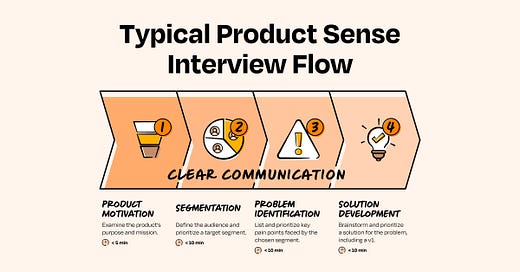


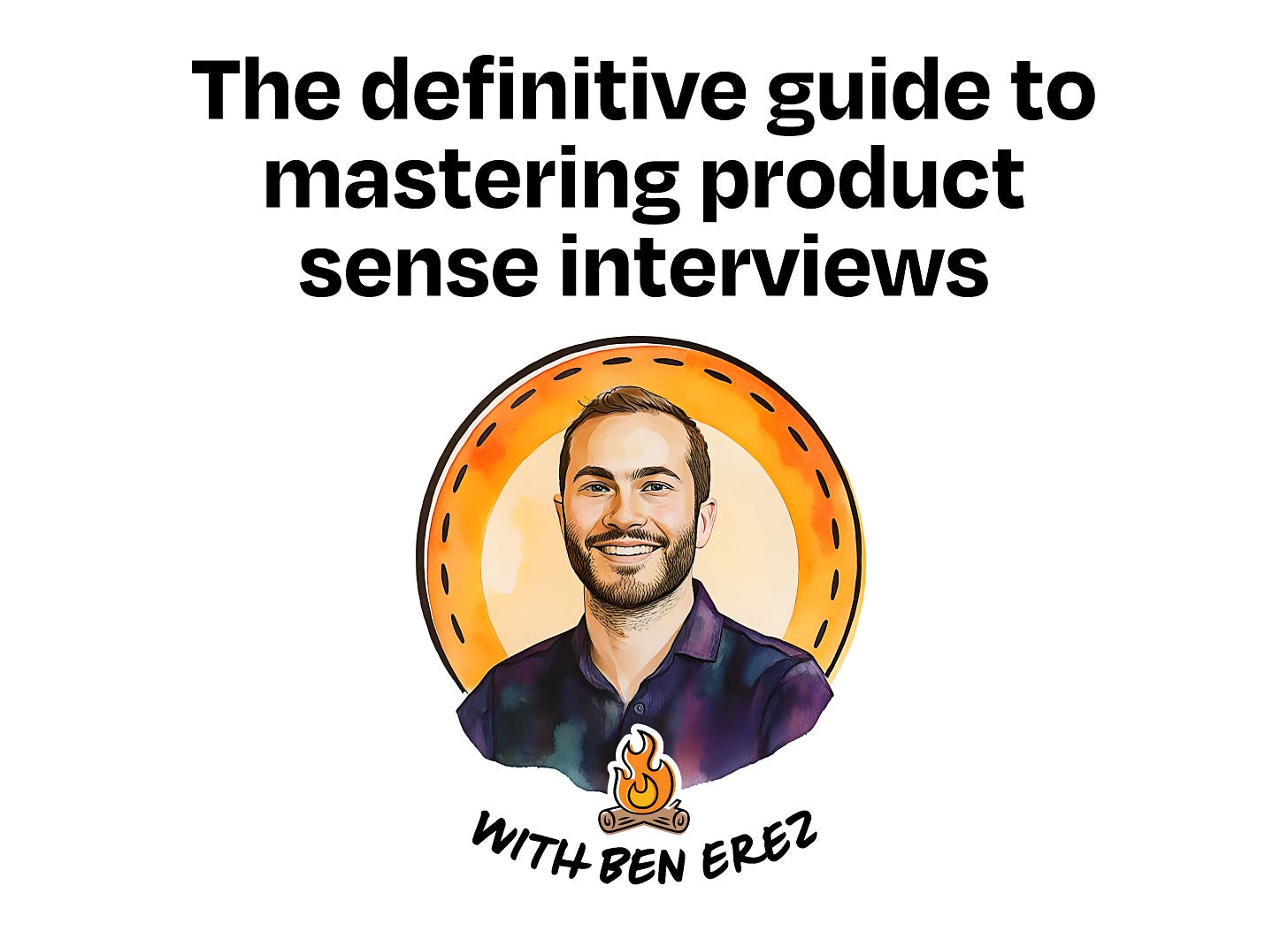
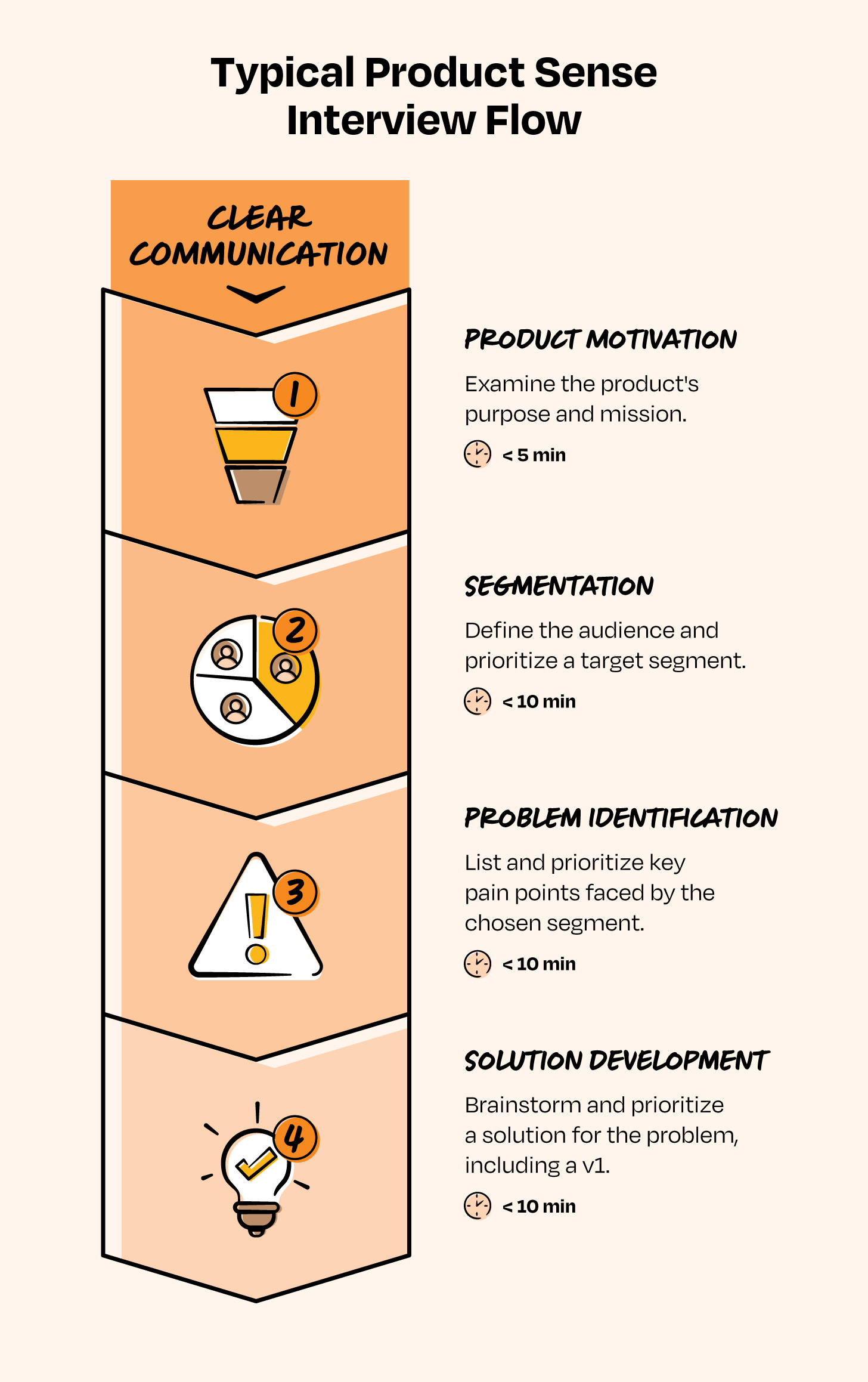
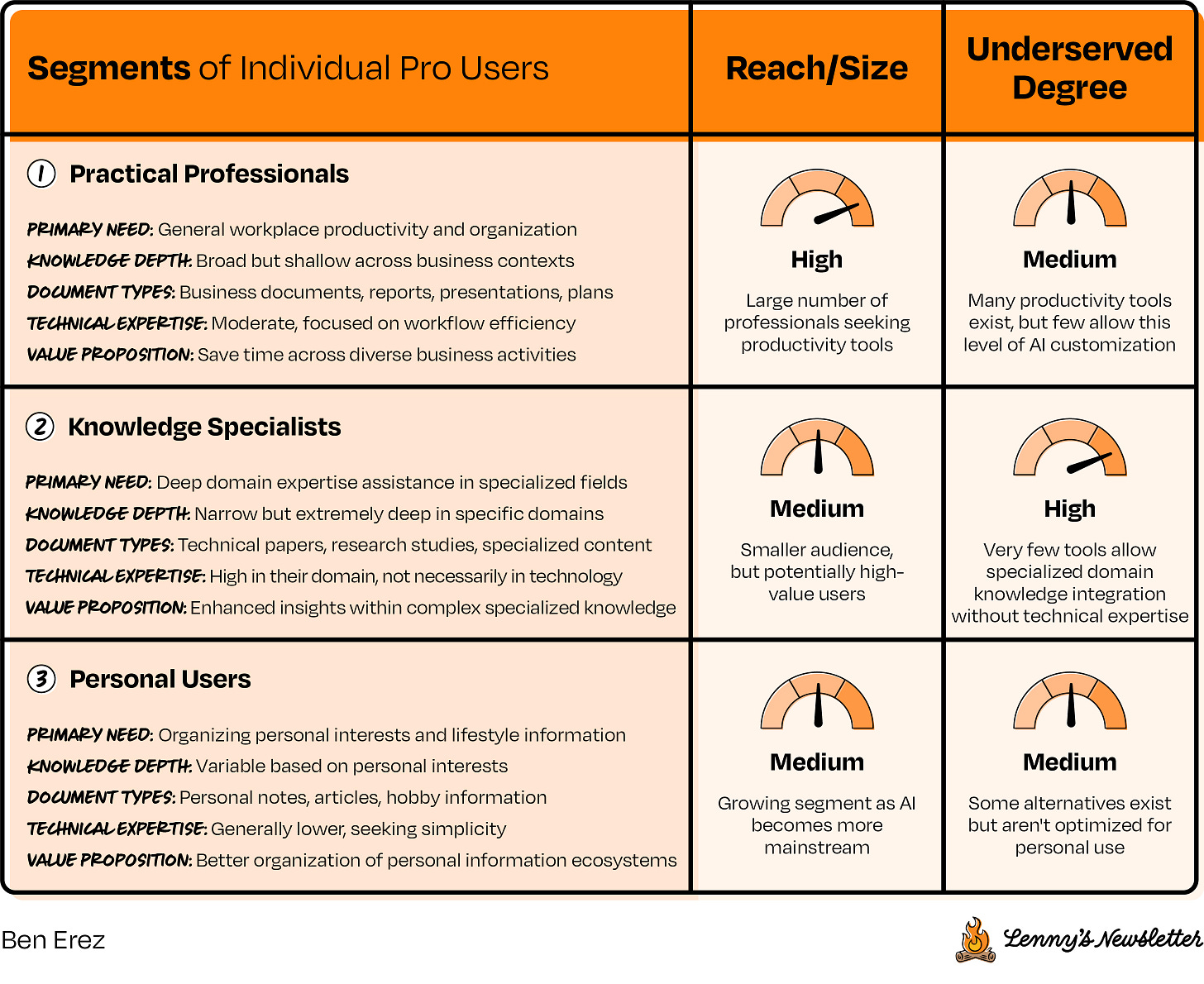
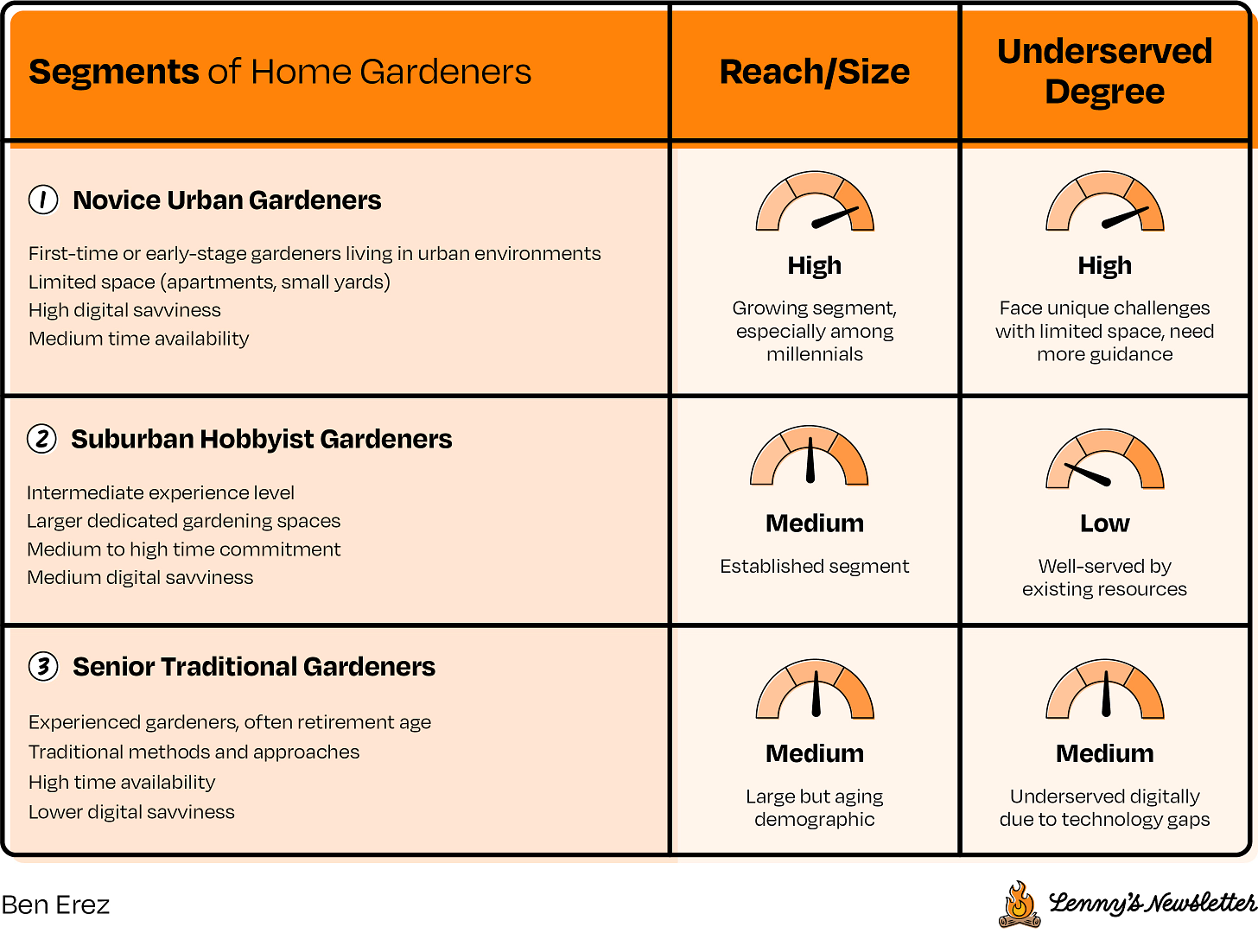

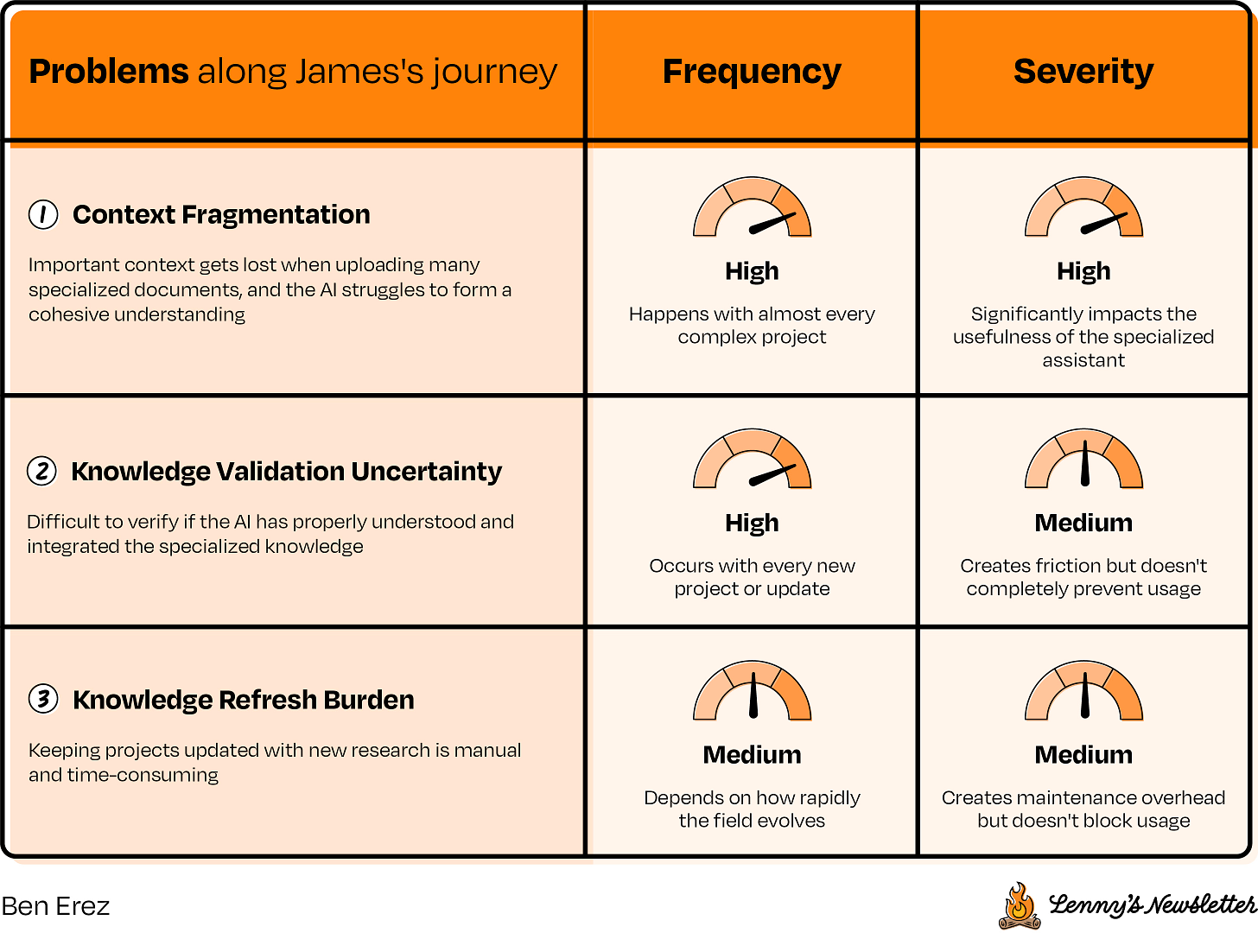
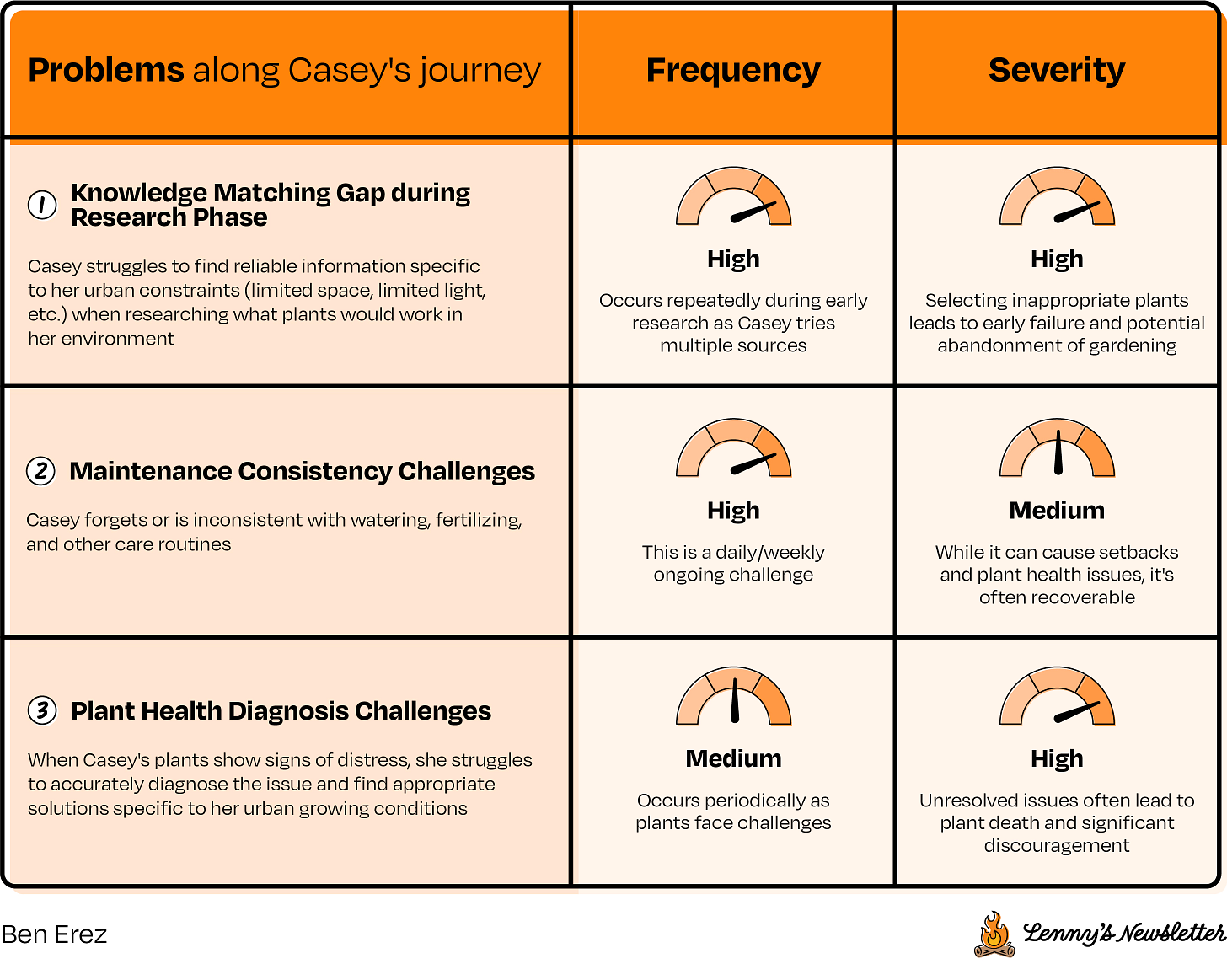
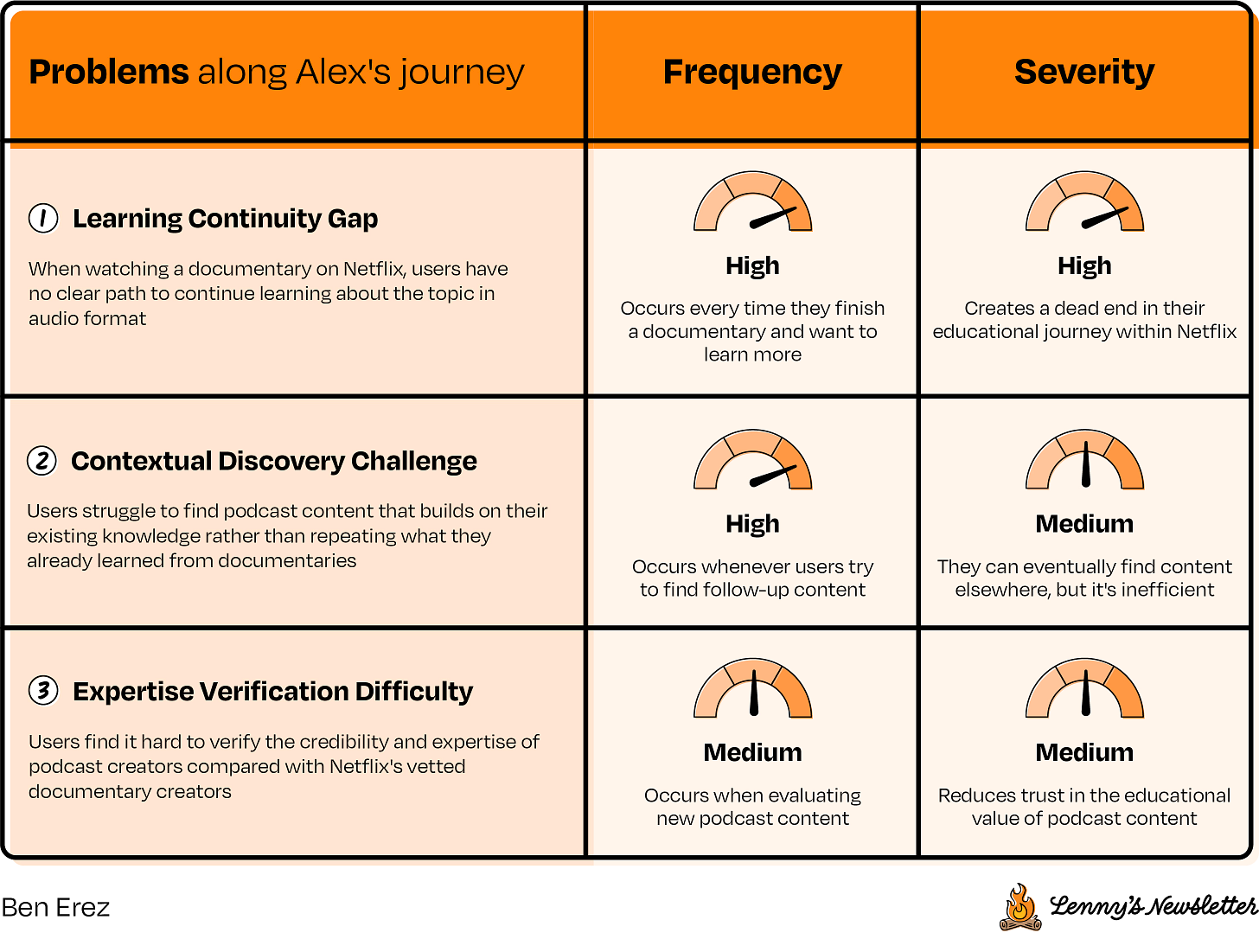
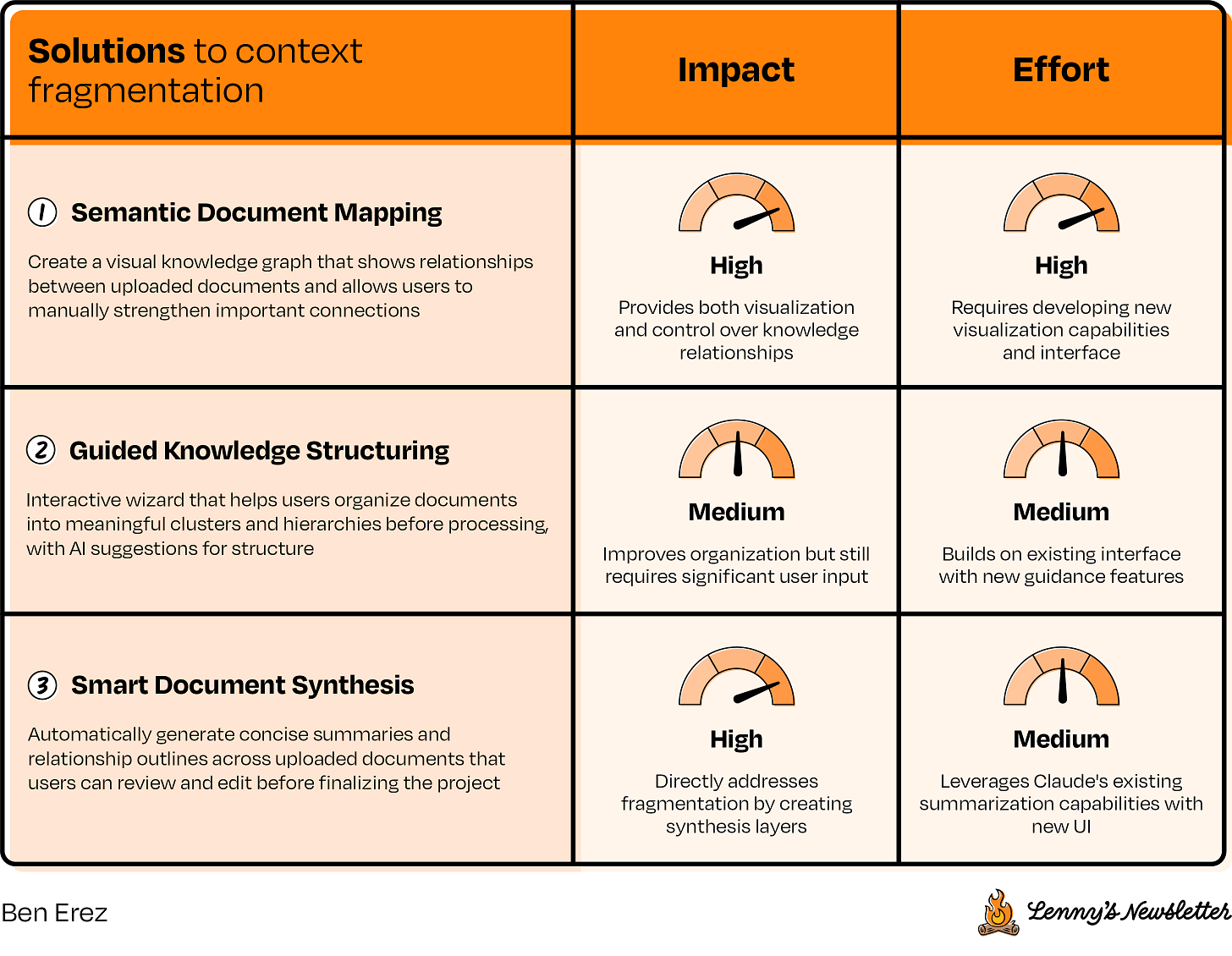
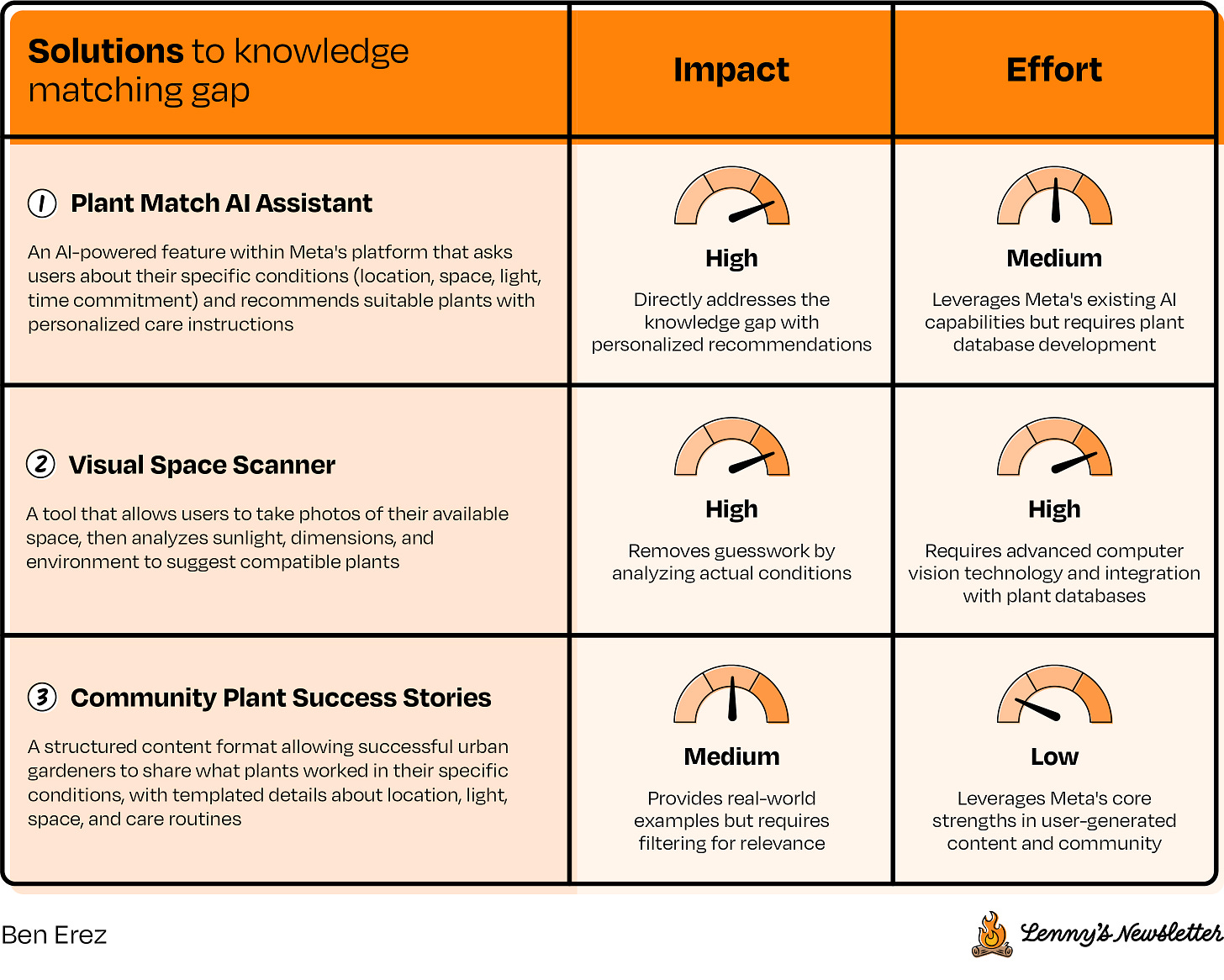
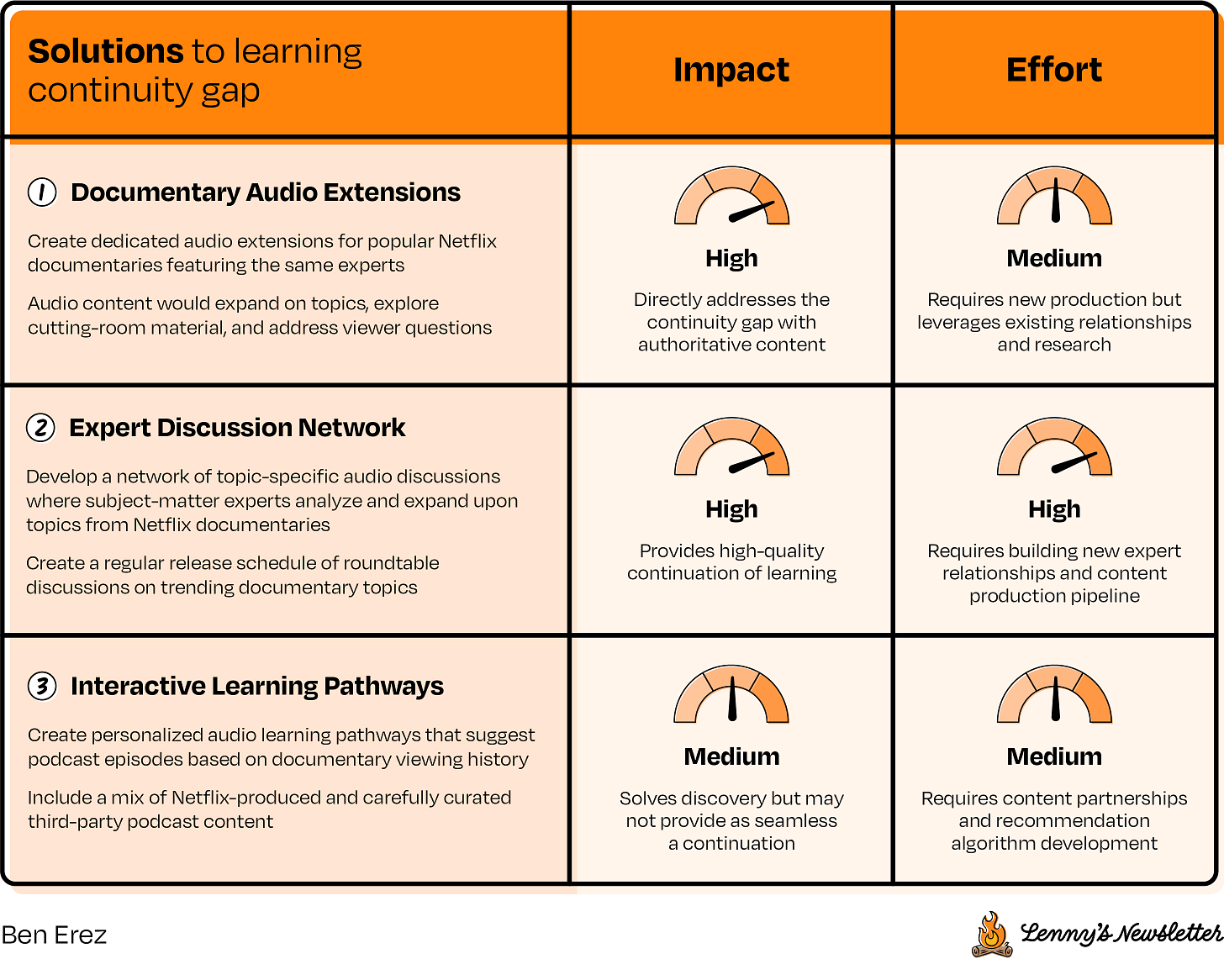

Wow, supper thorough. Appreciate the write up, Ben.